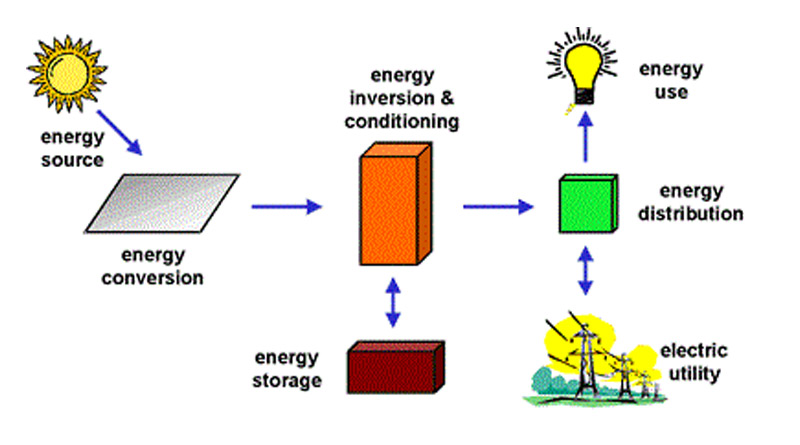Solar Water Heating Systems Basics
Most people are aware that solar power can provide electricity to run appliances and lights, and that this energy actually comes from the sun. Now, think about what happens to a shallow pool of water, or a garden hose that has been sitting in the sun for an extended amount of time: the water inside heats up. This is the basic principle behind solar water heating systems. The hot water produced can be used not only for bathing and washing dishes, but can be run through piping in the home for radiant heat, meeting the entire heating needs of any home.
Most solar water heating systems consist of a hot water storage tank, solar collectors that absorb energy from the sun, a back-up energy source, a heat pump, a heat exchanger, and controls for the system. The solar collector, most commonly a flat plate collector (there are integral and evacuated tube collectors as well) is an insulated, weatherproof box containing a black absorber plate under a transparent cover. A heat transfer fluid, used in indirect circulation systems, flows through the collector and into a heat exchanger. In direct circulation systems, the actual household water flows through the collector and into the home, but this system cannot be used in colder climates because the water will freeze while inside the collector. The heat exchanger extracts the warmth from the transfer fluid, which heats the household water in the storage tank, and this water can then circulate throughout the home.
Underfloor heating when used in combination with solar water heating systems, can be very cost effective. The water heated by the solar system can actually be run through the hydronic underfloor heating network, which is a series of interconnected tubing within the subfloor of a building. Built with the same principles as standing radiators or baseboard heaters (which can also be connected to use solar hot water), the underfloor network allows the hot water to transfer heat to the space above. This radiant heat is even, comfortable, and clean. No harmful greenhouse gases are produced in the heat collection and distribution, and significant savings are seen on electric bills.
Switching from a conventional water heater to a solar water heating system can reduce yearly operating costs by an estimated fifty-five to seventy-five percent. The hot water used in dishwashers, clothes washers, bathing, hand washing, and cooking can be supplied by your solar water heating system. Restaurants, which are required to have a supply of water over two hundred degrees Fahrenheit for sanitation purposes, can see significant savings with the installation of solar water heating systems. There is even a tax credit offered by the government that will reimburse thirty percent of the cost of installing a solar water heater.
With the operating costs of a solar water heater so low, and the purchase and installation more affordable with such tax credits, a new solar water heater can bring near immediate savings to a home or business. Producing clean, dependable heat, solar water heating systems will only continue to grow in popularity as the public discovers the myriad of advantages these systems offer.

